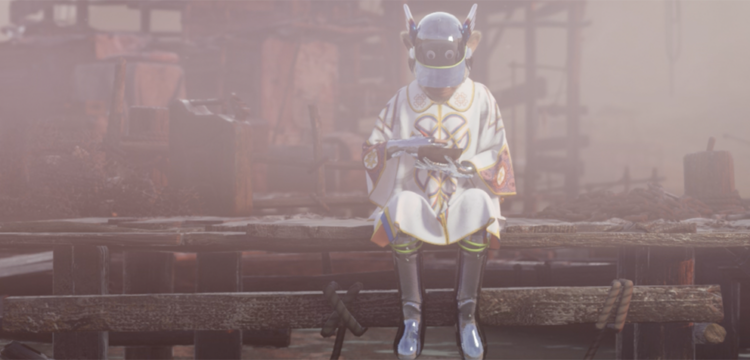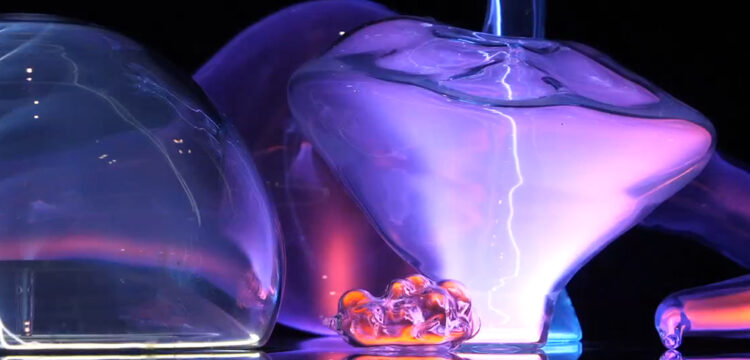Terrapolis
or How to Stay with the Trouble
When Irene Adorni, one of the PARSEC’s founders, contacted me to write about the fifth edition of Terrapolis festival, organized by the same association, I thought I would participate as a spectator. During the festival, though, I wasn’t in Italy, but in Novi Sad, a Serbian town where I’m writing from and where I’ll be staying until the end of October. Here I will spend some time reading, studying and questioning the role of curating in a world of political unrest, economic inequality, and climate crises. For what purpose should one organize an exhibition? What can be taken from a place, and what can be given back to it?
In this context, revisiting the work of Norina, Irene, Matilde, Giulia, Silvia, Daria, Francesca, Elisa, Ginevra, over the years can be seen as an answer, or at least an attempt to find a solution, by expanding the program beyond canonical formats to alternative ones, new languages and a wider array of places and audiences.
Founded in 2021 by PARSEC, a space and a collective based in Bologna and devoted to research in contemporary art, whose activities range from residencies to exhibitions, from talks and screenings to the creation of K.I.N. (a network for independent art associations in Italy), Terrapolis is a festival that aims to explore the relationship between contemporary art, collective practices and ecology.
Originally hosted in Bologna, the festival has gradually expanded its network to surrounding rural areas, from Tenuta Bene (2022) to Castiglione dei Pepoli (2025). These new geographical coordinates correspond to new temporal conformations: the traditional structure of the festival, previously condensed into a few consecutive days, has occasionally given way to more expansive formats, spread out over months of activities. To describe the evolution of the project, I asked some questions that intend to delve into Terrapolis’ origins, its present and future, the themes and philosophies that have informed it, and its intentions and plans for the future.
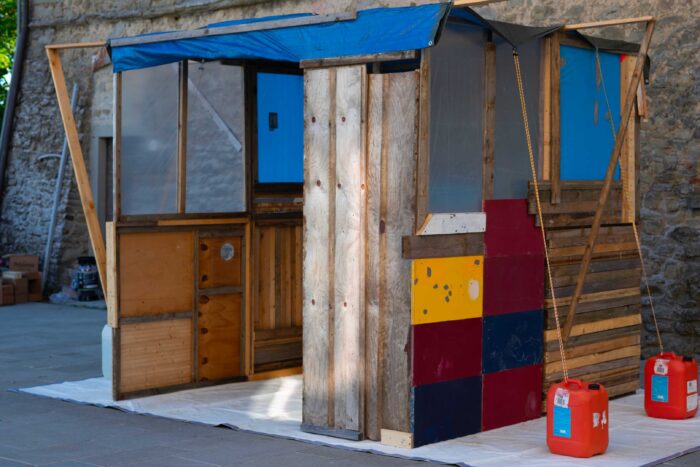
Giulia Gaibisso: As mentioned, the festival was founded in 2021 by the initiative of PARSEC, an experimental space and collective that, since its foundation, has been making discursive and dialogical practices its core focus, through talks, crits, and curatorial advisings. The exhibition activity itself is mostly related to the residency program, which tends to select young artists and curators, favoring an educational, research-based approach. When, how, and why did you found PARSEC? What instances still motivate you? How did you develop the idea for Terrapolis? What ideas and thoughts feed into this project?
PARSEC: We founded PARSEC in 2020, in the midst of the pandemic, out of a need for a shared space to work, reflect, and conduct research. From the very beginning, we understood that what brought us together was the shared belief that a collective approach was essential for generating meaningful discourse and critical reflection on the present. Working collectively allows us to challenge individualistic approaches and to foster consistently horizontal and inclusive ways of working across all our projects, aligning us with a wide network of artistic and political spaces in Italy and abroad that have chosen similar paths. What defines PARSEC is its multiplicity of perspectives: among us are people with backgrounds in anthropology, gender studies, design and visual communication, education, contemporary art history, visual arts, and cultural economics. This diversity allows us to approach everything through multiple lenses and opens up possibilities for rich and layered practices. Our residency program began alongside the opening of our physical space in Bologna in 2021. Having a base here allows us to be present and embedded in the local context. The relationship with the territory, the space, and the communities we engage with is central to our way of working. We currently run a four-month residency program twice a year, with open calls addressed to artists and curators who require a studio or dedicated space for research and production, and whose practices and interests resonate with ours.
Through the residency, we’ve had the opportunity to collaborate with practitioners working across diverse media—from video to performance, sculpture, painting, and photography—and engaging with a wide range of themes. This diversity challenges us, expands our perspectives, and informs our own practices. As part of the residencies, we organize studio visits, open studios, “crits” (informal discussions around work-in-progress), and final presentations, which may take the form of exhibitions or other public formats. Over the past few years, each edition has included a residency specifically reserved for artists and curators engaged in the field of arts and ecology. This reflects both a shift in our own research and an urgent need to engage with ecological issues alongside emerging voices in the arts. Each year, the research developed within the various editions of the PARSEC Residency focusing on arts and ecology has been presented during Terrapolis, our festival dedicated to the intersection between artistic and ecological practices. Initially a one-day event, since 2021 it has grown into a larger program that spans from May to October and includes both a multi-day festival and a broader curatorial platform.
The name Terrapolis is a reference to Donna Haraway’s concept of a multispecies, contaminated, and ever-transforming landscape. It’s a vision that stands in contrast to closed, anthropocentric cities—imagining instead a form of cohabitation with other species, rooted in ongoing transformation. Haraway’s work, particularly Staying with the Trouble, has deeply influenced how we think about kinship, speculative imagination, and collaborative world-building. These ideas have shaped both the curatorial framework of Terrapolis and the methodologies through which we work. When we started the festival five years ago, ecological thinking within contemporary art was only beginning to emerge in Italy. We were interested in creating a space in our city to reflect on these questions through artistic languages and community-based practices.
Throughout the various editions of Terrapolis, we have sought to explore some of the many facets of what we might call ecological thinking. Each year, our reflection begins with a key text, which becomes the conceptual entry point for a constellation of artistic and discursive practices. In previous years, we have addressed diverse topics within ecological research: investigative aesthetics and citizen-led inquiry—including collaborations inspired by TJ Demos and Forensic Architecture; utopian thinking—not as a vision of the future but as a retrospective exploration of lost possibilities, engaging with the idea of the archaeological trace of utopia through Damian Borowsky’s text Archaeology at the Limit of Thought; Anna Tsing’s reflections on mushrooms and post-capitalist survival—imagining interconnection and rebirth in damaged landscapes; and, most recently, the posthuman convergence theorised by Rosi Braidotti.
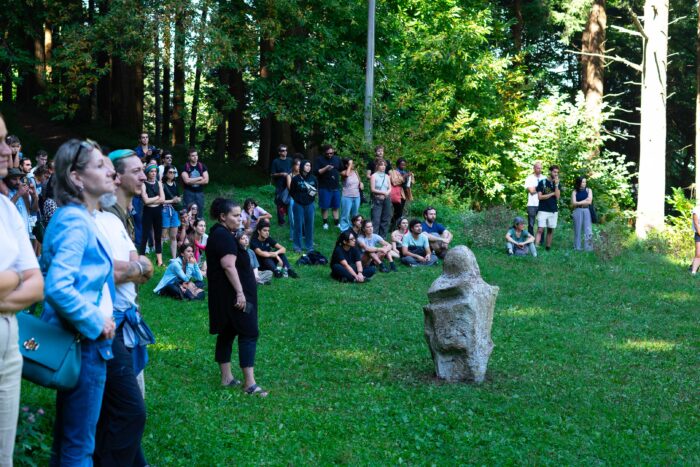
From the wonderful space in Via del Porto in Bologna—where most of the association’s activities take place—to the wider city and even beyond its borders. With Terrapolis, you have had the opportunity to engage with a variety of places and audiences: the first edition was held at the park of the Bonori Sports Center, in an urban context; the second took place at Tenuta Bene, in the hillside; then at Villa Angeletti (in collaboration with Tenuta Bene); then again in Bologna, throughout the city. Over the years, the program has gradually included new languages and practices: from moving images and performances to include readings and workshops, and eventually activities such as walks and climbing lessons, conducted respectively by Boschilla and Daniele Ziccardi. The changing landscape, in this context, seems to have played a decisive role. Could you tell us a bit about the evolution of the festival and the development of these collaborations, particularly in relation to the locations and communities you have engaged with?
The changing landscape has certainly mirrored the evolution of the project and its underlying theoretical framework. It also reflects our growing experience in organizing this type of event—from both practical and economic standpoints—as well as internal shifts within the collective itself, emerging from the ongoing reflections that continue to shape our research. A key element in this process has been the curatorial approach we have chosen to adopt. Equally important is the position we have decided to take as cultural workers—in relation both to the local context and to the broader conditions of the Italian cultural landscape in recent years.
Decentralizing culture and imagining it as active, porous, and in constant evolution—while working closely with artists and communities in spaces such as parks and community centers, which are by nature welcoming, open, and inclusive—is, in our view, at the very core and purpose of our work. We aim to maintain a critical perspective on the art world, and what truly interests us is building a counter-narrative, co-created together with the communities we engage with.
These are not easy goals to pursue, especially given the current state of the cultural system in Italy, where smaller, grassroots organizations often prove to be far more responsive and open than larger institutional centers. Over the years of organizing Terrapolis, we have been fortunate to collaborate with many like-minded collectives and individuals who share our vision.
The need to move beyond the city’s margins has gradually grown over time—also on a personal level for many of us—as a response to the city’s progressive cultural decline. Once a symbol of collectivity and grassroots culture, it has increasingly turned these very concepts into tools for promoting gentrifying projects that appropriate what the city had built over past decades, but which has since been systematically dismantled by local administrations. After five years, this process has brought us to Castiglione dei Pepoli, a small town in the Bolognese Apennines, where we have been able to experience a different kind of freedom, one deeply connected to the geographic and social fabric of the territory.
Choosing to move to the Apennines also meant stepping out of our comfort zone—leaving behind a familiar audience, often already part of the art world or directly engaged with the topics we explore, and who usually followed our events in the city.
As for the relationships we are now building with local communities, we are in the process of gathering feedback, but our first impressions are truly positive: this year’s Terrapolis has been the most widely attended so far—with an audience composed not only of people from the artistic and cultural fields, but, most importantly, of members of the Apennine communities, extending beyond the Bolognese area. The heterogeneity of the audience and the level of engagement shown throughout the festival’s activities have deeply moved us.
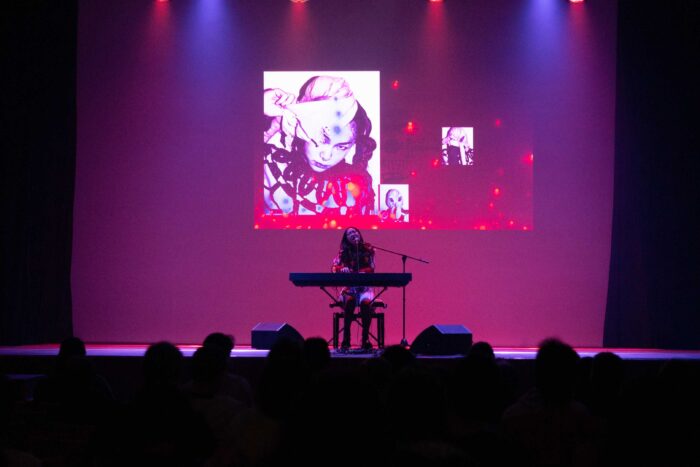
I assume that most of your supporters have participated in the initiatives to varying degrees. However, I am curious about how the relationship with the city has changed and whether you have noticed greater civic engagement. Above all, regarding the rural venues, I wonder if you have managed to engage and involve local audiences, activating synergies in the area well before the festival starts.
At first, we were a bit apprehensive about getting people to move and actively participate—especially when the activities don’t clearly involve food or drinks, lol. Building relationships and trust takes time, care, and a constant presence, particularly when it comes to workshops or relational practices—which are, in fact, what we’re most interested in.
Over time, we’ve learned that working in a smaller context helps us build stronger and more meaningful relationships—not only with local businesses, such as bars and associations, but also with the local council, which has already asked us to bring the festival back next year and expressed its willingness to continue supporting the project. We’re a small initiative, and that means relationships are absolutely central to what we do—though they’re not always easy to build. But when they do happen, after a lot of care and effort, the results are incredibly rewarding.
For this edition of Terrapolis, it was beautiful to see such a heterogeneous audience—including both professionals and non-professionals, and people of very different ages. The diversity of our program certainly played a role in this, but we also believe that the strong sense of care and attachment to the place that characterizes the Apennine communities was just as important.
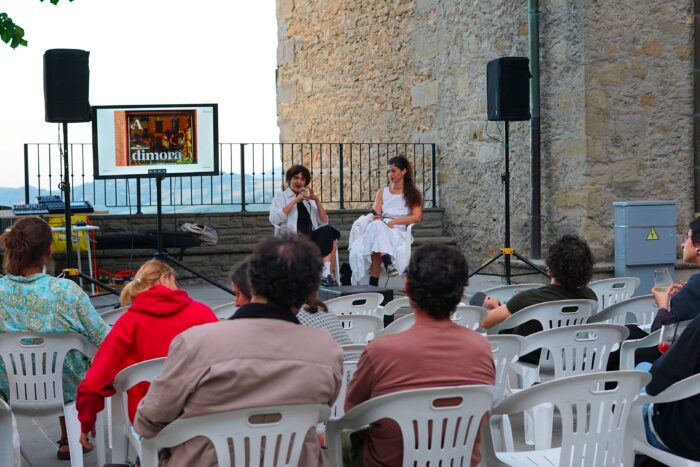
Some people came to thank us at the end of Irene’s performance in Abetaia, saying: “It’s been such a long time since we saw so many people here.” Two guys from Prato sat through Anouk Verviers’ durational performance, watching her and her collaborators build and destroy a column of cob for over an hour. When it ended, they came up to us, smiling: “If you need the full video, we filmed it—they were amazing!” I honestly didn’t expect anyone to stay that long, and yet they did. During Otay:Onii’s soundcheck, before the concert even began, a boy from Salerno asked if he could already sit down to watch the rehearsal—he had come all the way just for that.
This mix of people was constant throughout the festival. The engagement of the local audience was also made possible thanks to the collaborations we began last year with local associations. Together, we organized small public presentations across the territory, took part in other cultural events in town, and spent time simply talking with people. These ongoing encounters helped build a sense of familiarity and trust that, we believe, was key to the strong participation we experienced this year.
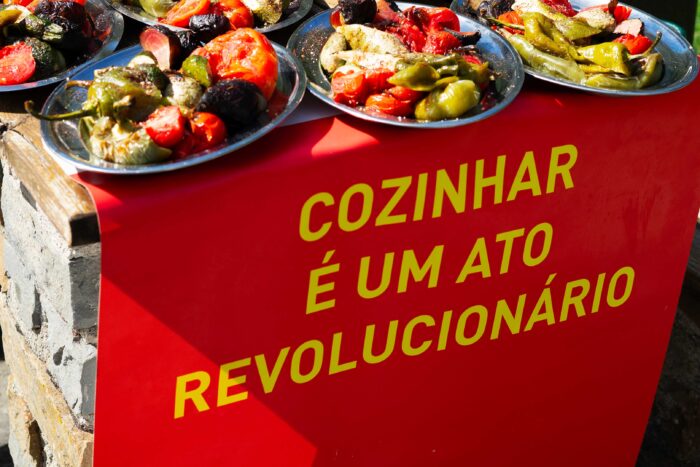
In this year’s program, as in previous editions, the titles, theoretical references, and invited guests highlight not only environmental and ecological issues (which are evidently central to the festival’s mission) but also their intersection with feminism. Guests such as Camilla Bernava and Ilaria Santoemma will explore this subject in depth, but I would like to know how ecofeminism has influenced your practice, both individually and collectively.
On an ideological level, we believe we’re living in a time when the feminist struggle cannot be separated from the fight for social and ecological justice—and vice versa. These struggles are deeply intertwined, and we’re witnessing this connection in real time, especially through the lens of decolonial movements like the ongoing Palestinian resistance.
Within our research group, there are members who focus specifically on gender issues and who are actively engaged in feminist and transfeminist movements. But even for those whose work isn’t explicitly grounded in feminist or gender theory, these concerns shape our collective thinking and doing. They inform how we approach both theory and practice, and we are constantly working to deepen our understanding and engagement.
This year, through personal and professional relationships cultivated in both academic and activist contexts, we invited Ilaria Santoemma and Camilla Bernava. Their contributions have been crucial in helping us explore ecology and posthumanism through a transfeminist lens.
Starting from transfeminist posthumanism as a critical stance—one that allows us to move beyond the notion of a supposedly “universal” human, which in reality has historically been defined as white, cisgender, able-bodied, male, and economically privileged—we’ve been reflecting on how this perspective offers tools for thinking and living within crisis.
Rather than relying solely on scientific paradigms that quantify environmental catastrophe in abstract terms, we’re interested in frameworks that foreground relational and affective ecologies. That is, ways of being that recognize interdependence between human and non-human life, and that question hierarchical structures in order to imagine more just, coexistent futures.
These questions are deeply influenced by thinkers like Donna Haraway—whose work, in fact, inspired the very name of this festival. During our discussion, we reflected on what it might mean to create a kind of posthuman training—a way of making ourselves accountable for the world we are part of, staying with the trouble rather than expecting salvation through technoscientific solutions or surrendering to collapse. It’s about asking essential questions concerning the agency of non-human life and considering new forms of coexistence beyond the destructive models we’ve inherited.
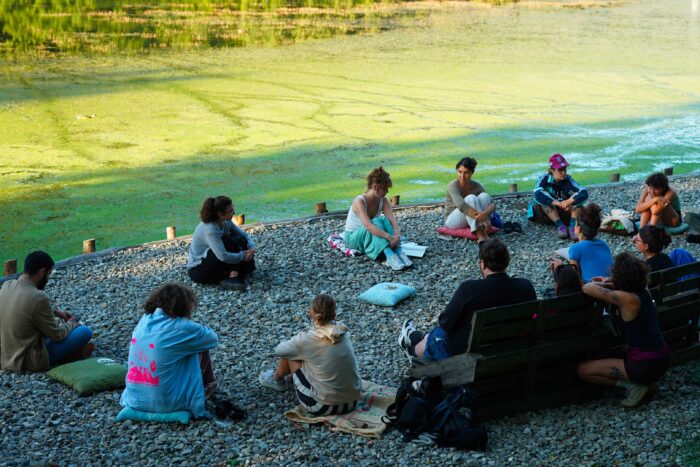
Already mentioned activities that will take place during the three days of Terrapolis are climbing sessions and the walks. Among others: an independent publishing market, lunches and dinners (in collaboration, for instance, with Tocia! Cucina e comunità), a writing workshop held by Wu Ming 2, DJ sets, and listening sessions (such as the sleeping concert curated by Laguna). How do you view these formats in relation to more canonical projects carried out within your space and especially considering the current economic and political conditions in which the art world operates?
In response to the current political and economic conditions in which the art system operates—and which it often perpetuates and reinforces—we believe that the most meaningful response lies in being together, supporting one another, and collectively facing the difficulties that affect all those who, like us, try to resist within this context.
The latest edition of Terrapolis was born precisely from these reflections. The concept of “transversality,” referenced in the title, speaks to the ability to hold together what is heterogeneous—to create relationships while maintaining differences. From this perspective, the festival brings forward composite subjectivities and relational ethics born out of collaboration between diverse entities in times of crisis. A relational intent runs through the artistic and theoretical practices we have chosen to present, where intersectional alliances, situated knowledge, and both temporary and local communities come together in forms of ecological and cultural resistance.
The collaboration with Tocia! Cucina e comunità is deeply rooted in these values—starting from the name they’ve chosen, which recalls tocio, a kind of sauce: a mixture of ingredients, experiences, and knowledge that transforms into shared culture. The tociada becomes a convivial, participatory moment, an invitation to get one’s hands dirty, to be open to contamination, to engage in the collective creation of a new, evolving identity. Tocia! imagined a post-disaster meal in which participants were invited to reflect on survival, community-building, and meaning-making through a shared food ritual.
In a similar way, Wu Ming 2’s collective writing workshop is built on a methodology grounded in patience and mutual care. It seeks a shared truth among those writing, blending and respecting each other’s ideas. It is a practice that encourages reading, critical thinking, self-reflection, and democratic engagement—a kind of artisanal workshop of words, where knowledge is built together.
The sleeping concert by Laguna also activated this collective dimension, albeit through a radically different mode. The audience was invited to sleep or drift into sleep during a multi-hour sound experience, creating an intimate and communal atmosphere far removed from the usual dynamics of a conventional DJ set. It’s a way of being together that centers rest, trust, and the subtle bonds that arise in shared vulnerability.
Even within more “canonical” formats, these themes remain central. For instance, the durational performance by Anouk Vervier—Building, destroying, and rebuilding cob columns as high as our bodies—explores complex issues such as systems of power and how they shape bodies and our interconnections with the matter around us. Through the use of cob—a natural building material made of earth, straw, and water—the artist creates a living manifesto of care, shared labor, and transformation. In this way, artistic practice becomes a political gesture.
Ultimately, we attribute great value to all these formats because they allow for different modes of participation, encounter, and reflection. They challenge traditional hierarchies of artistic value and propose alternative ways of making and experiencing culture—grounded in care, collaboration, and resistance. In this context, Terrapolis—Transversal Ecologies Festival brings together artistic practices, local realities, independent cultural collectives, activists, researchers, public institutions, and local residents, promoting cultural decentralization as a necessary condition to address the environmental and cultural urgencies of our time.
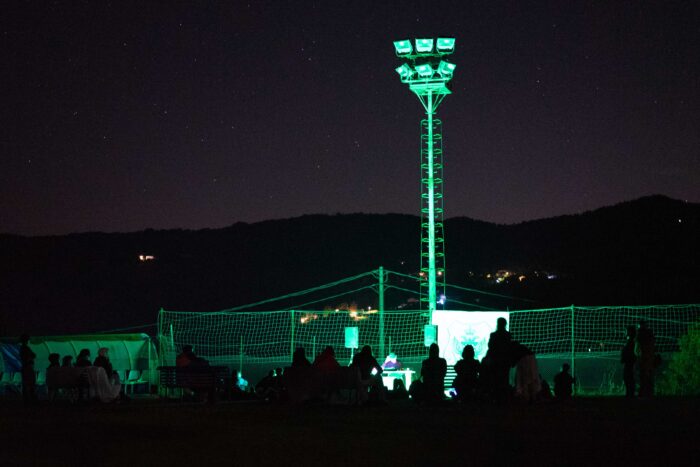
What are your plans for the future? Are you already working on the next edition?
If you asked Daria, she’d probably say: “Rest!” But the truth is, we’re neither able nor willing to step away from these explorations. The political times we are living in call for a form of commitment that is not only artistic and theoretical, but also explicitly political.
Silvia often says that Parsec is our creature—a being we’ve nurtured with care from the very beginning—and that we will continue to cultivate it, trusting our intuition along the way. And fortunately, we’ve just been awarded a major grant which, if all goes well, will allow us to take some important steps forward in the evolution of the project—especially by making the residencies not only free, but also supported by a production budget and a proper fee for the artists involved. It’s something we’ve been working toward for years, and starting in 2026, it will finally become possible—we couldn’t be happier!
And of course, we are already working on the fifth edition of Terrapolis, as well as the new cycle of artistic residencies, open to emerging artists, curators and researchers. Resisting is fundamental, especially in the historical moment we are living through. Art makes it possible to imagine the future, and creating beautiful things together is, and will always be, a revolutionary act.


